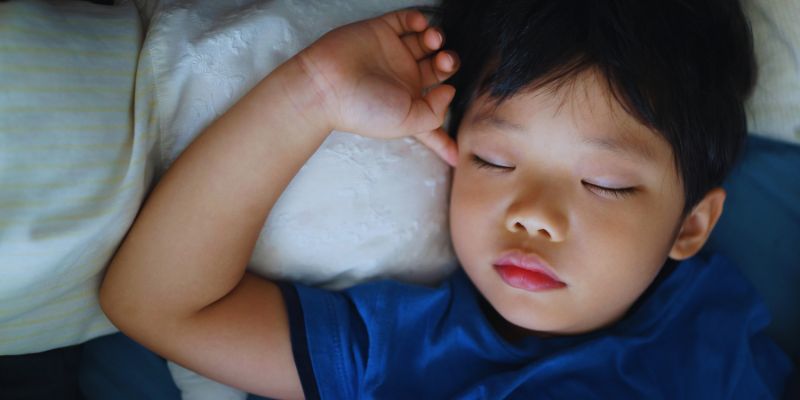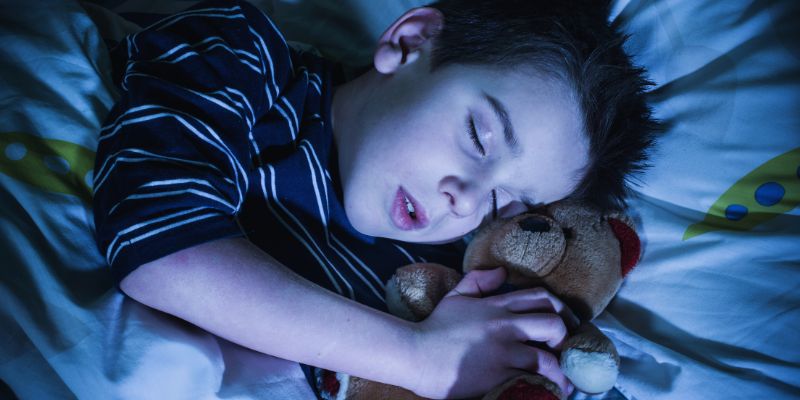Many times, helping your preschooler sleep alone can be difficult. Young children often experience fear or anxiety related to sleeping in their bed. Still, your child's development and independence depend on a good sleeping schedule. Knowing the causes of their anxiety and offering mild encouragement will enable them to feel safe and comfortable.
This article will coach you through doable actions to assist your preschooler in moving to sleep alone. From developing a soothing evening ritual to handling nighttime anxiety, we will provide helpful advice on building your child's confidence and guaranteeing they sleep peacefully.

Understanding Your Preschooler's Fear of Sleeping Alone
Understanding your preschooler's fear is the first step toward enabling them to sleep alone. Many times, students are fearful of the dark or uneasy when away from their parents. These worries might make one reluctant to fall asleep in their bed. It's better to accept and validate these emotions than discount them. "I understand that you feel scared," you can respond, "but you are safe in your room."
If you know your youngster's emotional requirements and provide comfort, they will be able to overcome their anxiety progressively. Making them feel safe mostly depends on creating peaceful and soothing surroundings. Comforting safety reminders can be a nightlight, a preferred stuffed animal, or a nice blanket. With mild direction over time, your youngster will become confident enough to sleep alone.
Create a Consistent Bedtime Routine
Helping your preschooler fall asleep alone depends on a steady evening schedule. Routine helps children to feel predictable and safe, which makes them thrive. Create a relaxing pre-bedtime schedule, including reading a bedtime tale, soaking in a warm bath, or spending quiet time with each other. This schedule tells your youngster it's time to relax and get ready for sleep.
Before bed, avoid activities such as watching TV or playing intense games. Instead, design a peaceful space with subdued lighting, soft sounds, and a cozy sleeping surface. This consistent schedule can help your preschooler link comfort and relaxation with bedtime, making the transition to sleeping alone far simpler over time. Follow the same schedule every night to strengthen the habit and give you peace of mind.

Gradual Transition: Helping Your Preschooler Adjust
Turning your preschooler toward sleeping alone will require time and care. Your child should be gently introduced to the change if they are used to sleeping with you or in the same room. First, let your child spend brief time alone in their room playing with toys or working on peaceful projects during the day. That will enable children to come to know their environment.
Start sitting with them while they fall asleep at night, then progressively cut your time in the room. You can go closer to the door every night until you are no longer required. This slow approach lessens anxiety and facilitates a lessening of the change load. Praise and comfort your youngster throughout the procedure, therefore supporting the good habit of sleeping alone.
Use Positive Reinforcement to Encourage Independent Sleep
Positive reinforcement is a very effective tool for helping your preschooler sleep alone. Celebrating your child's successes will inspire them to sleep in their bed. Make a reward system out of a sticker chart, whereby your child gets a sticker every time they successfully go to sleep alone. Once they have a particular number of stickers, offer a little reward—such as a unique treat or additional playtime.
Positive reinforcement lets your child feel successful and pleased with their development. Tell them direct compliments for their independence and bravery. Celebrate every little triumph along the way instead of emphasizing failures. This method not only promotes autonomous sleep but also helps you to bond with your child. Reinforcing good habits will help your child succeed in their sleeping patterns.
Provide Comfort Items for Security
For your preschooler who is moving to sleep alone, comfort objects can offer emotional support and a sense of security. These might be a unique cushion, a comfortable blanket, or a beloved stuffed animal. When your child is in their room alone, having something familiar nearby will help them feel safe and less nervous. You might also consider using a nightlight to help them overcome their dark phobia.
Your youngster should participate in choosing these comfort objects since it will help them feel more in charge of their circumstances. To help your preschooler have a great time, let them select their plush animal or blanket. These comfort objects might be your nighttime friends since they provide comfort when you're not there. Over time, these objects can enable people to feel more confident and safe in their surroundings.
Be Patient: It's Normal for Setbacks to Happen
Helping your preschooler sleep alone requires patience throughout the process. Setbacks are natural; hence, your youngster could sometimes wish to return to your bed or beg for more comfort. If improvement is not instantaneous, do not get disheartened. Every child is unique; some will find it more challenging to adapt to sleeping alone than others. The secret is dependability and comfort.
Calmly remind your child of the actions they have done to sleep alone if they wake up throughout the night and want comfort. Comfort should be given without caving into their desire to return to your bed. That guarantees they learn to self-soothe and helps confirm the new sleep schedule. Maintaining your tough attitude, keeping open lines of contact, and respecting their emotions are important. Helping your child develop good sleeping habits calls for patience.
Create a Sleep-Inducing Environment
Helping your preschooler sleep alone depends much on sleep-inducing surroundings. Make sure their accommodation is fit for relaxation. Ensure the room is comfortable and neither overly hot nor overly chilly. Blackout curtains help filter extra light, producing dark and quiet surroundings for sleep. Additionally, encouraging relaxation is achieved through a peaceful color palette using gentle tones.
Eliminate any possible distractions from the room, including electronics that can disrupt sleep. Soft lullabies or white noise machines can help to cover any outside sounds that might make your youngster uncomfortable. Creating peaceful surroundings also depends on a nice bed with comfortable linens and a reassuring pillow. If you provide a peaceful environment, your youngster will be more at peace and ready to sleep alone.
Conclusion:
Encouragement of your preschooler to sleep alone calls for consistency, tolerance, and comfort over a slow period. Understanding their worries, developing a relaxing evening ritual, and using positive encouragement will help your child grow confident and independent. Your child will feel confident in their bed with comfort goods and a safe sleeping environment. Remember, setbacks are inevitable; thus, be patient and keep providing support. Your preschooler will gradually be able to move to sleep alone and acquire good sleeping habits for the future.









